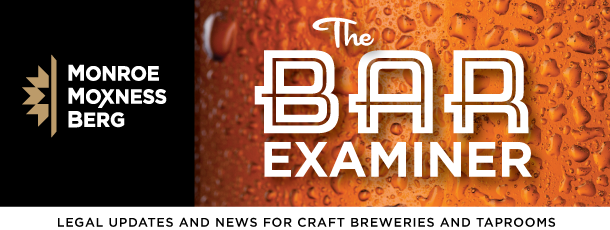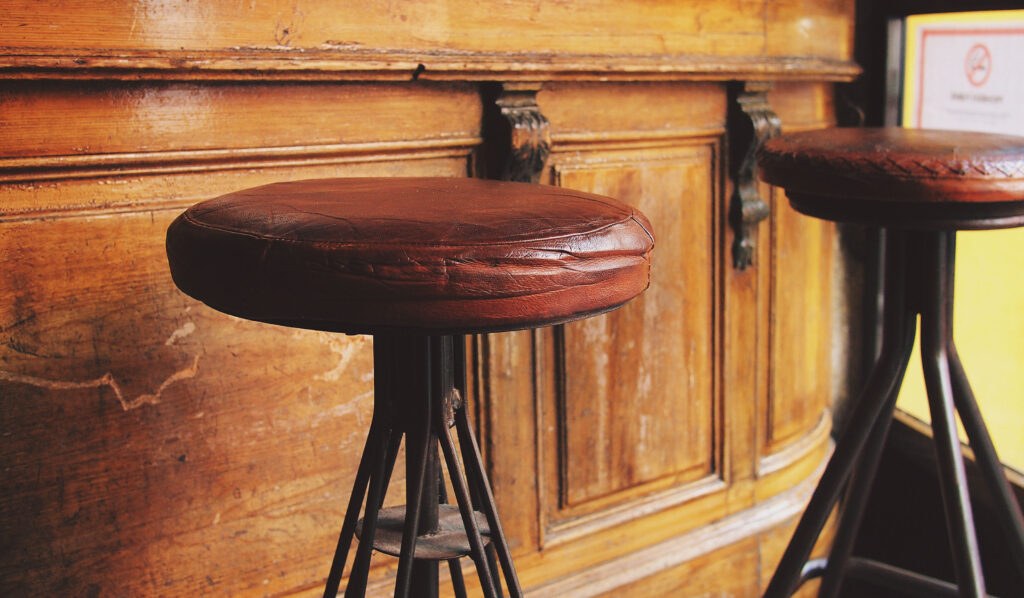DOWNLOAD THE FULL SUMMER 2015 ISSUE OF BAR EXAMINER
The Minnesota craft brewery scene continues to grow, with new styles and colorfully-marketed brands filling local shelves and exciting new breweries cropping up throughout the greater metro and outstate areas. For those interested in making their entry into the industry, there are a number of considerations to take into account – some are legal in nature, while others involve more subjective questions concerning business philosophy and individual vision and preference.
In this article, we will consider a few of the factors that may help you determine the appropriate business model for you and your beer. In particular, we will look at some of the key differences between the two business models most popular in Minnesota’s craft brewery industry today: the brew pub and the production brewery with taproom.
Brew pubs
In 1987, Minnesota adopted legislation allowing restaurants to operate their own brewing facilities directly on-site. Previously, Minnesota’s three-tier system – a regulatory scheme established in most states after Prohibition – required manufacturers (breweries) to only sell their beer to independent wholesale distributors, who then in turn could only sell to independent retailers (liquor stores, restaurants and bars). While the three-tier system still remains largely intact today, brew pubs (and later taprooms as described below) marked a return to the brewery-owned “saloons” that were prevalent in the United States before Prohibition and the chipping away at the strict legal barriers between retail and manufacturing/production.
From a business perspective, the premise and focus of the brew pub model has remained similar over the last three decades — offering an innovative cuisine carefully crafted to pair with distinctive beer set in a restaurant atmosphere. Especially with the increasing popularity of food/beer pairings and chef-driven restaurant concepts, brew pubs offer a unique opportunity to combine the love of beer with a high-quality restaurant experience.
Legally speaking, brew pubs, like restaurants, may operate at multiple locations, but the tradeoffs are that their production is restricted to a total of 3,500 barrels annually, and they cannot distribute their beer for sales off-site as production breweries can. One advantage though with brew pubs is that in addition to their own beers, they may also sell the beers, wines, liquor and spirits of other manufacturers, which creates a lot more options for patrons and revenue opportunities for the brew pub. Previously, brew pubs could only sell their own beer for on-site consumption, but in 2003 the Minnesota legislature allowed brew pubs to obtain off-sale licenses and sell up to 500 barrels of their beer annually in 64-ounce sealed containers, also named “growlers”, to the public for off-site consumption.
Production Breweries with Taprooms
While brew pubs have certainly made inroads, the craft beer industry in Minnesota forever changed in 2011 when the taproom legislation (popularly referred to as the “Surly bill”) became state law. Under the taproom laws, production breweries producing less than 250,000 barrels annually could obtain an on-sale malt liquor license permitting them to sell their own beer on-site at their brewery or an adjacent site, in a so-called “taproom”. Prior to the taproom laws, production breweries could not sell their beer directly to consumers.
The business model for production breweries with taprooms varies significantly and often depends on the brewery’s size. With larger breweries, taprooms may only account for between 20%-30% of sales, but they offer an important profit center as margins in taprooms typically run 3-4 times more than the brewery’s sales to wholesalers and/or from their self-distribution efforts. On the other hand, for smaller breweries taprooms may represent all or a large majority (80%-100%) of their sales, which means they operate much like a brew pub, just without a kitchen. Finally, the largest brewers, Surly being the first in Minnesota, are opening “destination” breweries complete with European-inspired beer halls, beer gardens, restaurants, gift shops, music and event spaces – with their manufacturing and production occurring both on-site and at other off-site facilities.
Despite significantly more capacity and the ability to distribute locally, regionally and nationwide, production breweries are limited to one taproom location in Minnesota and may only sell their own beer at their taproom – meaning that they cannot sell any beer, wine, liquor or spirits of other manufacturers. Originally, taprooms could not sell growlers for off-site consumption, but in 2013 the Minnesota state legislature adopted laws allowing for off-sale licenses of growlers by production breweries with similar restrictions (e.g., may only sell 500 barrels off-sale annually) as are imposed on brew pubs. While Minnesota state law allows breweries to operate a restaurant, many municipal codes prohibit breweries from doing this. And even if permission is obtainable, most breweries – with the exception of large destination breweries – decide not to hold food licenses and instead arrange for food trucks on-site or allow restaurants and pizza establishments to make deliveries to patrons visiting their taprooms.
The Choice: Brew Pub or Taproom?
Brew pubs offer the chance to enjoy a holistic experience where craft beer brewed both on-site and elsewhere can be carefully paired with food offerings. While beer still remains the main focus, the success of a brew pub often depends on a combination of other factors, including the success of the pub’s menu items and its ability to create an enticing atmosphere for casual diners and beer enthusiasts alike. To expand and grow, brew pubs need to open more locations and/or create alternative food and drink offerings beyond their beer.
Taprooms, on the other hand, face fewer restrictions with respect to capacity and range of distribution. The taproom model allows brewers to focus strictly on their beer while also establishing a relatively high-margin revenue stream from their taproom. Depending on the size of the brewery, profits from a taproom can be used to expand distribution, reinvest in the taproom and production spaces and/or provide financial returns for owners and investors.
For the consumer, the business and legal distinctions between brew pubs and production breweries with taprooms may not be of much concern – good, high-quality beers are produced under each model. However, the distinctions are crucial for brewers as each model has its own appeal and its own specific advantages and restrictions. The attorneys at Monroe Moxness Berg can help you understand those distinctions and navigate the complex federal, state and local laws and regulations governing each.
By Joshua Mason and John Remakel

